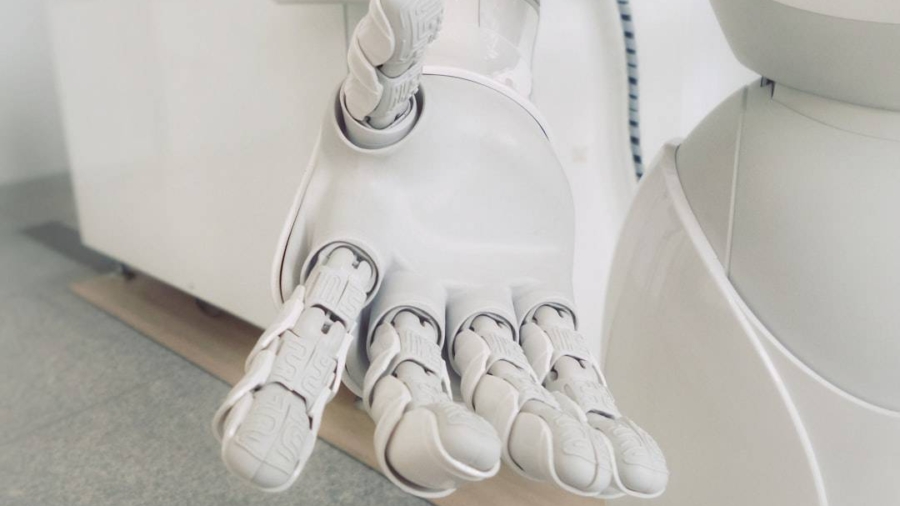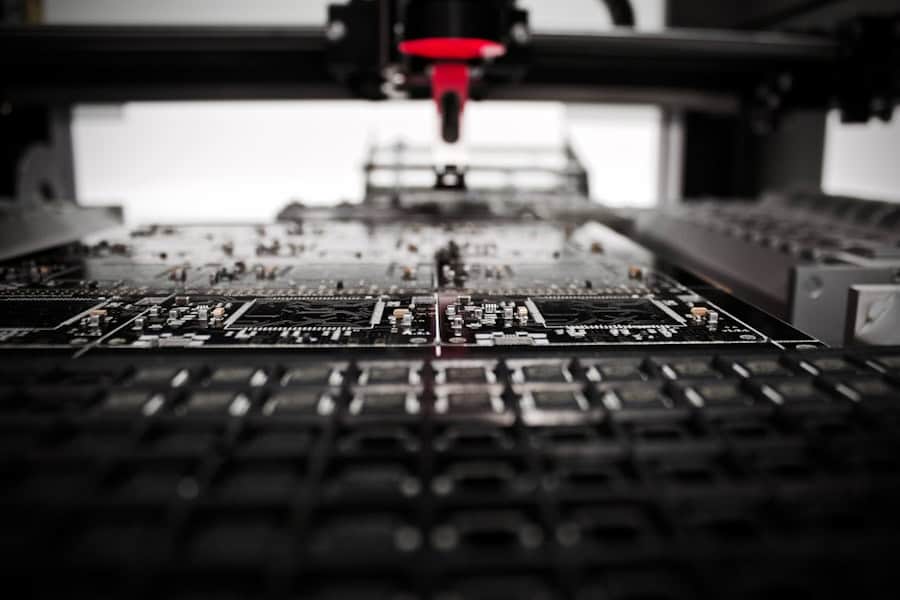The integration of robotics into waste management systems marks a significant evolution in how societies handle refuse and recycling. As urban populations swell and the volume of waste generated increases, traditional waste management methods are becoming increasingly inadequate. Robotics offers innovative solutions that enhance efficiency, reduce labor costs, and improve safety in waste handling processes.
The advent of robotic technologies in this sector is not merely a trend; it represents a paradigm shift that could redefine the entire landscape of waste management. Robotic systems are being designed to perform a variety of tasks, from sorting recyclables to collecting waste in urban environments. These machines can operate in environments that are hazardous to human workers, such as landfills or areas with toxic materials.
By automating these processes, municipalities can not only streamline operations but also ensure a higher level of safety for their workforce. The application of robotics in waste management is a response to the pressing need for sustainable practices that can cope with the challenges posed by increasing waste generation and environmental concerns.
Key Takeaways
- Robotics in waste management offers increased efficiency, accuracy, and safety in handling waste materials.
- Advantages of using robotics in waste management include reduced labor costs, improved sorting accuracy, and enhanced recycling capabilities.
- Implementation of robotics in sorting and recycling involves the use of advanced sensors, robotic arms, and AI algorithms to separate and process different types of waste materials.
- Robotics in waste collection and transportation involves the use of autonomous vehicles and drones to optimize waste collection routes and reduce environmental impact.
- Integration of artificial intelligence in waste management enables predictive maintenance, real-time monitoring, and data-driven decision making for more effective waste management processes.
- Challenges and limitations of robotics in waste management include high initial investment costs, technological limitations, and potential job displacement.
- Future outlook and potential developments in robotics for waste management include the use of swarm robotics, advanced AI algorithms, and robotic systems for hazardous waste handling.
- The impact of robotics on redefining waste management systems is significant, leading to more sustainable, efficient, and environmentally friendly waste management practices.
Advantages of Using Robotics in Waste Management
Improved Recycling Process
This not only accelerates the recycling process but also reduces contamination rates, which is crucial for maintaining the quality of recycled materials.
Cost Savings
The use of robotics can lead to substantial cost savings over time. While the initial investment in robotic technology may be high, the long-term benefits often outweigh these costs. Automated systems can reduce labor expenses by minimizing the number of workers needed for sorting and collection tasks.
Optimized Waste Collection
Additionally, robots can help optimize routes for waste collection vehicles, leading to lower fuel consumption and reduced wear and tear on equipment. This efficiency translates into financial savings for municipalities and private waste management companies alike.
Implementation of Robotics in Sorting and Recycling
The implementation of robotics in sorting and recycling processes has already begun to transform how materials are processed. Advanced robotic systems utilize machine learning algorithms and computer vision to identify and separate different types of materials with remarkable precision. For example, companies like AMP Robotics have developed AI-powered robots that can recognize various recyclable items, such as plastics, metals, and paper products, based on their shape, size, and color.
These robots are capable of learning from their environment, continuously improving their sorting accuracy over time. In addition to improving sorting efficiency, robotic systems can also enhance the overall recycling rate. By automating the sorting process, facilities can handle larger volumes of materials without compromising quality.
This is particularly important as many regions face challenges in meeting recycling targets set by local governments or international agreements. The ability to process more recyclables effectively means that less material ends up in landfills, contributing to a more sustainable waste management system.
Robotics in Waste Collection and Transportation
Robotics is also making significant strides in the area of waste collection and transportation. Autonomous vehicles equipped with advanced navigation systems are being developed to collect waste from residential and commercial areas without human intervention. These vehicles can utilize GPS and real-time data to optimize their routes, ensuring that they operate efficiently while minimizing fuel consumption.
The use of robotics in waste collection not only improves efficiency but also enhances safety for workers and pedestrians alike. Traditional waste collection often involves workers manually lifting heavy bins or navigating busy streets, which poses risks of injury.
By deploying autonomous vehicles for collection tasks, municipalities can reduce the likelihood of accidents and create a safer working environment for their employees. Furthermore, these vehicles can be equipped with sensors to detect obstacles or pedestrians, further enhancing safety measures during operation.
Integration of Artificial Intelligence in Waste Management
Artificial intelligence (AI) plays a crucial role in enhancing the capabilities of robotic systems within waste management. By integrating AI algorithms into robotic technologies, waste management companies can analyze vast amounts of data to optimize operations. For example, AI can be used to predict waste generation patterns based on historical data, allowing companies to allocate resources more effectively and plan collection schedules accordingly.
AI also enhances the decision-making capabilities of robotic systems during sorting processes. Machine learning models can be trained on large datasets to improve the accuracy of material identification and classification. This means that robots can adapt to new types of materials or changes in consumer behavior over time, ensuring that recycling facilities remain efficient and effective in their operations.
The synergy between robotics and AI is paving the way for smarter waste management solutions that are responsive to evolving challenges.
Challenges and Limitations of Robotics in Waste Management
Despite the numerous advantages associated with robotics in waste management, several challenges and limitations must be addressed before widespread adoption can occur. One significant hurdle is the high initial cost associated with implementing robotic systems. While long-term savings may be realized through increased efficiency and reduced labor costs, many municipalities may struggle to secure funding for such investments upfront.
Additionally, there are technical challenges related to the complexity of waste materials themselves. The heterogeneous nature of waste means that robotic systems must be capable of handling a wide variety of items, some of which may be difficult to identify or sort accurately. For instance, contaminated materials or items that do not conform to standard shapes can pose difficulties for robotic sorting systems.
Continuous advancements in AI and machine learning are essential to overcoming these challenges and improving the reliability of robotic technologies in waste management.
Future Outlook and Potential Developments in Robotics for Waste Management
The future outlook for robotics in waste management is promising, with ongoing research and development aimed at enhancing existing technologies and creating new solutions. As AI continues to evolve, we can expect more sophisticated robotic systems capable of performing complex tasks with greater autonomy and accuracy. Innovations such as collaborative robots (cobots) that work alongside human workers could further enhance operational efficiency while maintaining safety standards.
Moreover, advancements in sensor technology will likely lead to improved detection capabilities for robotic systems. Enhanced sensors could enable robots to identify not only recyclable materials but also hazardous substances or items that require special handling. This would contribute to safer working environments while ensuring compliance with environmental regulations.
As public awareness regarding sustainability grows, there will be increased pressure on waste management systems to adopt innovative technologies that align with eco-friendly practices.
The Impact of Robotics on Redefining Waste Management Systems
The impact of robotics on waste management systems is profound and multifaceted. By automating processes such as sorting, collection, and transportation, robotics enhances efficiency while reducing costs and improving safety for workers. The integration of artificial intelligence further amplifies these benefits by enabling smarter decision-making and adaptive learning capabilities within robotic systems.
As we move forward into an era where sustainability is paramount, the role of robotics in waste management will only become more critical.
The ongoing development of robotic technologies promises a future where waste management is not only more efficient but also more aligned with environmental goals, ultimately contributing to a cleaner and more sustainable planet.
In addition to exploring The Role of Robotics in Redefining Waste Management Systems, readers may also be interested in learning about the best software for video editing in 2023. This article provides valuable insights into the latest tools and technologies that can enhance the video editing process, making it easier and more efficient for professionals in the field. To read more about this topic, check out




